 "ttyymmnn" (ttyymmnn)
"ttyymmnn" (ttyymmnn)
11/04/2016 at 12:35 • Filed to: Planelopnik, planelopnik history
 9
9
 22
22
 "ttyymmnn" (ttyymmnn)
"ttyymmnn" (ttyymmnn)
11/04/2016 at 12:35 • Filed to: Planelopnik, planelopnik history |  9 9
|  22 22 |
Welcome to This Date in Aviation History , getting of you caught up on milestones, important historical events and people in aviation from November 2 through November 4.
!!! UNKNOWN CONTENT TYPE !!!
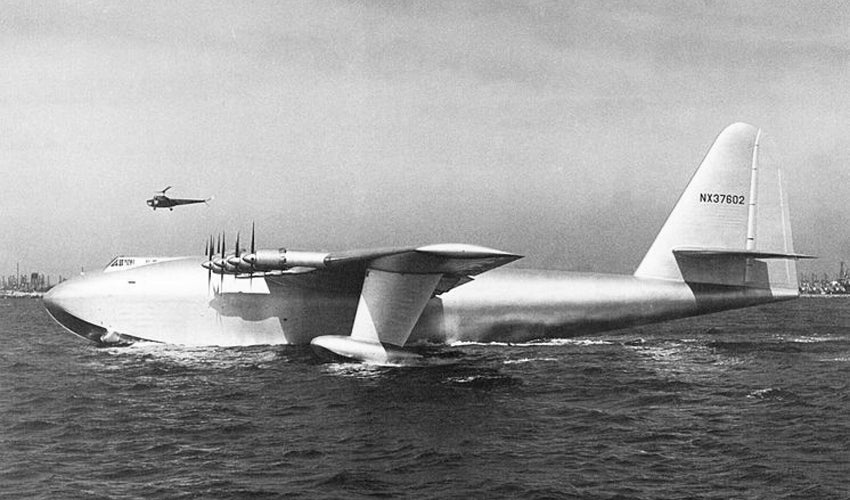
November 2, 1947 – The first flight of the Hughes H-4 Hercules. There’s no question that !!!error: Indecipherable SUB-paragraph formatting!!! was an eccentric man. Known for his reclusive behavior, he was also one of the wealthiest people of his generation. Through his varied interests and investments, Hughes managed to grow a $1 million inheritance into a billion-dollar empire that encompassed interests in investing, film making, real estate and philanthropy. But to some, he is best known for his efforts in aviation, first with the formation of !!!error: Indecipherable SUB-paragraph formatting!!! in 1932 and later with his purchase of a controlling investment in !!!error: Indecipherable SUB-paragraph formatting!!! in 1939. Hughes had a fascination with speed and air racing, and built the !!!error: Indecipherable SUB-paragraph formatting!!! , in which he set numerous speed records. The H-1 was also the last privately-developed aircraft to set a world speed record. He developed other aircraft for the US military, none of which were particularly successful, but Hughes is perhaps best known for his greatest failure, the H-4 Hercules. Popularly known as the Spruce Goose , the Hercules was conceived early in WWII by shipbuilder !!!error: Indecipherable SUB-paragraph formatting!!! and built by Hughes Aircraft in the hopes of providing the US Army with a transatlantic cargo plane that would be capable of carrying either 150,000 pounds of cargo, 750 fully equipped troops, or two !!!error: Indecipherable SUB-paragraph formatting!!! weighing 30 tons each. Hercules was an apt name for the plane, because it was a true behemoth and the largest flying boat ever built. Its wingspan of 320 feet 11 inches remains the longest in the history of aviation. In an effort to save weight and conserve metal, the Hercules was constructed almost entirely of birch (not spruce), and was powered by eight !!!error: Indecipherable SUB-paragraph formatting!!! radial engines each producing 3,000 horsepower. The Hercules was constructed in Hughes’ Los Angeles factory, then a house moving company transported the disassembled aircraft to Long Beach, where it was reassembled for flight testing.

With Hughes at the controls, the Hercules made two uneventful taxi runs, then, on the third, Hughes lifted the
Spruce Goose
off the surface of the water. The giant aircraft rose to about 70 feet, flew at 135 mph for about a mile, then settled back onto the water—and never flew again. It is impossible to know if the
Spruce Goose
would have met its design objectives. Its first flight came more than two years after
!!!error: Indecipherable SUB-paragraph formatting!!!
and the US government was no longer interested in such a huge propeller-powered cargo plane. The
Spruce Goose
was maintained in a climate-controlled hangar for thirty years, and eventually acquired by the Disney company and placed on display in 1980. It was later transferred to the Aero Club of Southern California and now resides at the
!!!error: Indecipherable SUB-paragraph formatting!!!
in McMinnville, Oregon.
(FAA photo; Los Angeles Times photo)
!!! UNKNOWN CONTENT TYPE !!!
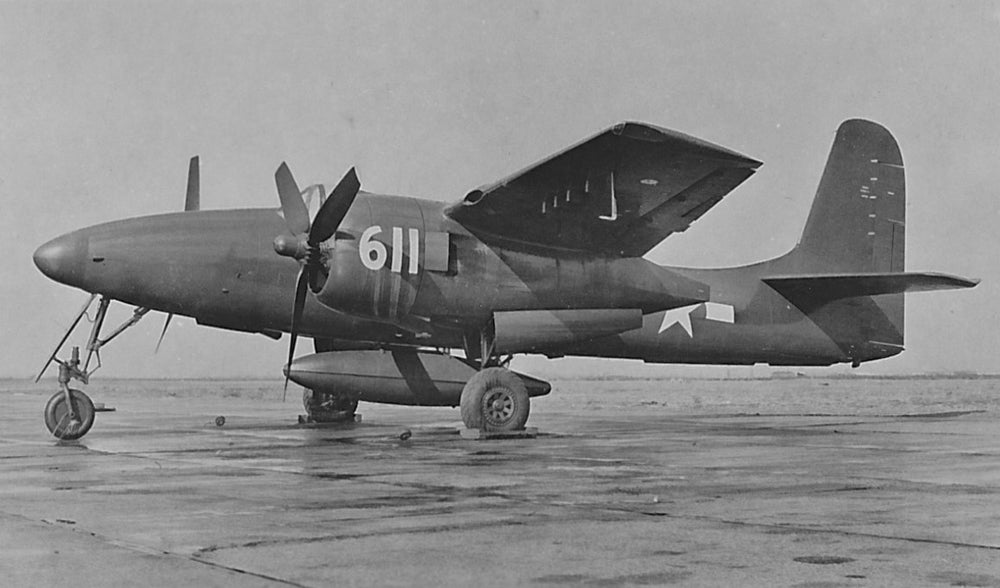
November 2, 1943 – The first flight of the Grumman F7F Tigercat. During WWII, the piston powered fighter reached the zenith of its development. Unfortunately for the war effort, some of the greatest propeller planes ever produced came too late make a difference in the outcome of the war, and were soon displaced by jet-powered aircraft in Korea. Such was the fate of the Tigercat, one of the fastest piston-powered fighters ever built and, in the words of Navy test pilot !!!error: Indecipherable SUB-paragraph formatting!!! , “...the best damn fighter I’ve ever flown.” Grumman has a rich history of providing warplanes for the US Navy, but the aircraft that became the Tigercat actually started out as a project by Grumman to build a twin-engine !!!error: Indecipherable SUB-paragraph formatting!!! for the US Army Air Corps, the !!!error: Indecipherable SUB-paragraph formatting!!! , which itself was a development of the radical !!!error: Indecipherable SUB-paragraph formatting!!! . But when the XP-50 prototype was lost in a crash, funding was shifted to a new design, the XP-65, and development of the Army interceptor, as well as a Navy version, designated XF7F-1, took place simultaneously. The new interceptor kept the twin engines of its predecessor, but was otherwise a traditional design, albeit with a very narrow fuselage to reduce its frontal area.
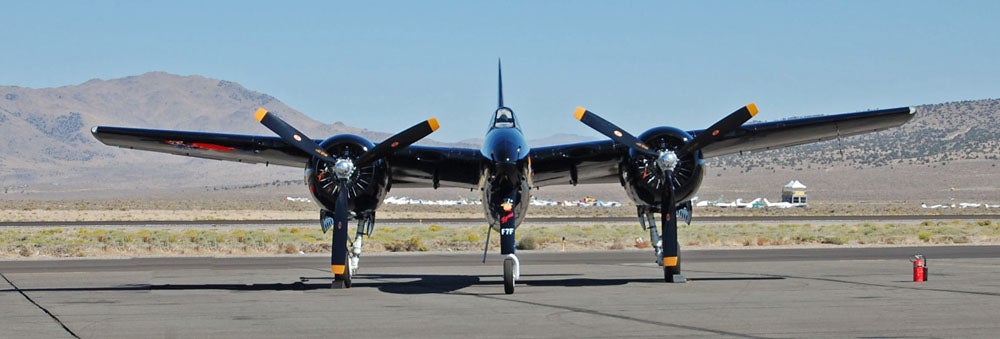
The main difference between the Army and Navy versions was that the Army’s XP-65 was equipped with superchargers. But, as development continued, it became clear that the Army and Navy had very different requirements, and those needs could not be met by a single airplane (a situation that would plague the development of the !!!error: Indecipherable SUB-paragraph formatting!!! twenty years later). So Grumman, based on their experience building fighters for the Navy, would focus entirely on the XF7F and the Army stopped pursuing the XP-65. The Navy envisioned their new aircraft not only as a fighter, but also as a ground attack aircraft, and the Tigercat had a serious bite: four 20mm cannons and four .50 caliber machine guns, as well as hardpoints on the wings and fuselage for bombs and torpedoes. And not only could the Tigercat hit hard, it was fast. With a top speed of 460 mph, it outpaced the !!!error: Indecipherable SUB-paragraph formatting!!! by 80 mph, and was even a bit faster than the !!!error: Indecipherable SUB-paragraph formatting!!! . However, the early models were not able to pass carrier qualifications and Tigercats were relegated to land bases and used as night fighters and for photo reconnaissance. By the third variant, the Tigercat was finally cleared for carrier operations, but by this late stage only 12 were produced. Too late for WWII, the Tigercat did see limited action in Korea as a night fighter, shooting down two !!!error: Indecipherable SUB-paragraph formatting!!! biplanes. But this would be its only combat success. Most Tigercats were eventually sent into storage and later scrapped, though some were bought as surplus and used as firefighting water bombers. Of the 364 aircraft produced, seven remain airworthy, and two currently are being restored, one to airworthiness. Interestingly, Grumman had originally intended to call the F7F the Tomcat, but that name was considered too risqué for the era. The name Tomcat would famously appear later on the !!!error: Indecipherable SUB-paragraph formatting!!! . (Photo author unknown; photo by Dziban303 via !!!error: Indecipherable SUB-paragraph formatting!!! )
!!! UNKNOWN CONTENT TYPE !!!
Short Takeoff
!!! UNKNOWN CONTENT TYPE !!!
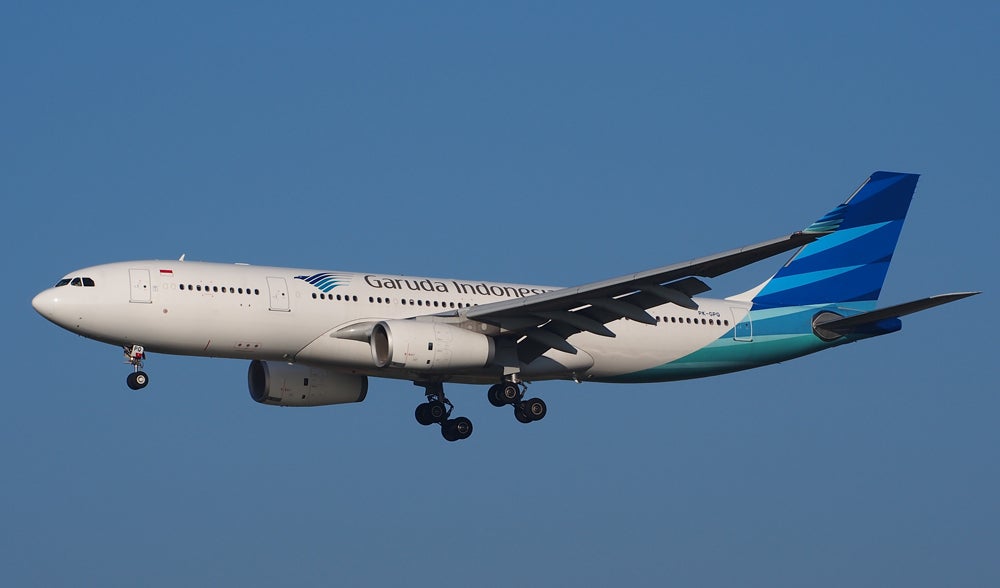
November 2, 1992 – The first flight of the Airbus A330. One of a number of derivatives of Airbus’ original !!!error: Indecipherable SUB-paragraph formatting!!! wide-body, the A330 has a range of up to 8,300 miles and can carry as many as 335 passengers or 150,000 pounds of cargo, depending on the variant. The A330 was developed alongside the four-engine !!!error: Indecipherable SUB-paragraph formatting!!! , and shares a common airframe, though the A340 has a centerline wheel bogey. To accommodate different customers, the A330 was the first Airbus airliner to offer a choice of three different engines. Still in production today, over 1,200 A330s have been built, and serve numerous civilian carriers, cargo companies, and the military. (Photo by Alf van Beem via !!!error: Indecipherable SUB-paragraph formatting!!! )
!!! UNKNOWN CONTENT TYPE !!!

November 2, 1929 – The founding of The Ninety-Nines, an international organization of woman pilots that helps to provide professional opportunities for women in aviation and “promotes advancement of aviation through education, scholarships, and mutual support while honoring our unique history and sharing our passion for flight.” Founded at Curtiss Field in New York by ninety-nine of the then-117 licensed female pilots, the organization counts !!!error: Indecipherable SUB-paragraph formatting!!! among its charter members, and includes such notables as !!!error: Indecipherable SUB-paragraph formatting!!! , !!!error: Indecipherable SUB-paragraph formatting!!! , !!!error: Indecipherable SUB-paragraph formatting!!! , !!!error: Indecipherable SUB-paragraph formatting!!! and astronaut !!!error: Indecipherable SUB-paragraph formatting!!! . (Photo via The Smithsonian)
!!! UNKNOWN CONTENT TYPE !!!

November 3, 1957 – The launch of Sputnik 2, the second spacecraft to be launched into Earth orbit and the first to carry a live animal into space. Launched atop a modified !!!error: Indecipherable SUB-paragraph formatting!!! ICBM just 32 days after !!!error: Indecipherable SUB-paragraph formatting!!! , Sputnik 2 carried a dog, named Laika, to provide data on how spaceflight would affect a living organism. Laika survived the launch, but, by the third orbit, the temperature in the cabin rose to 109ºF, and telemetry data indicated that Laika was most likely dead by the third day in orbit, either from the heat or a carbon dioxide buildup. The manner of Laika’s death caused some controversy, but the dog surely would have died anyway, as it was 162 days before Sputnik 2 returned to Earth, and burned up on reentry. (Hungarian postage stamp)
!!! UNKNOWN CONTENT TYPE !!!
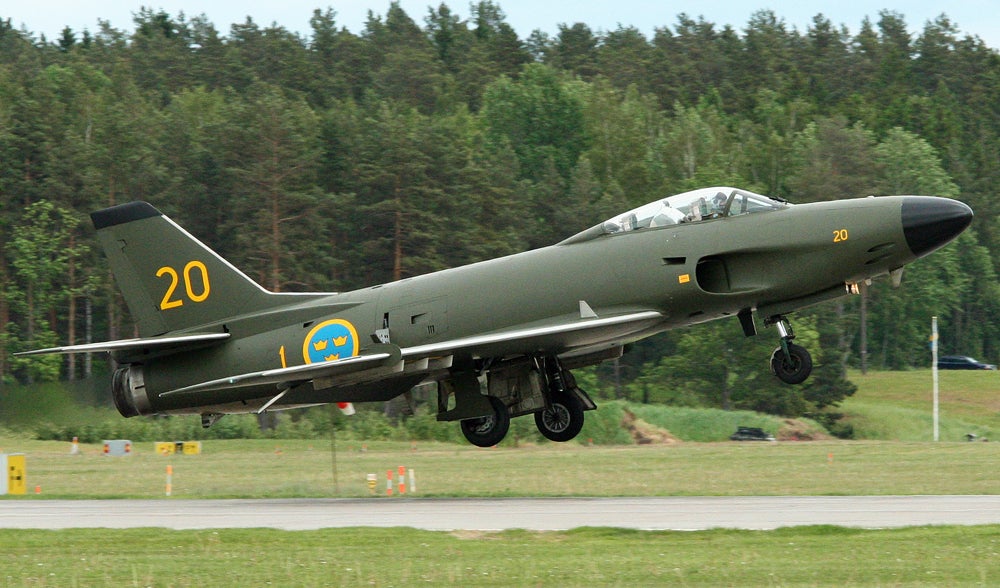
November 3, 1952 – The first flight of the Saab 32 Lansen, a two-seat transonic fighter-bomber developed by Saab for the Swedish Air Force. Originally designed as one of the first dedicated ground attack jets, Saab produced three principal variants: the A 32A for ground attack, the J 32B for aerial combat, and the S 32C for reconnaissance. Plagued by a rash of fatal crashes early in its operations, the Lansen was phased out beginning in 1971 in favor of the !!!error: Indecipherable SUB-paragraph formatting!!! , though some continued operations into the 1990s as a target tug and as an electronics warfare platform. A total of 450 Lansens were produced from 1954-1960, and it was the last purpose-built ground attack aircraft developed for Sweden. (Photo by Alan Wilson via !!!error: Indecipherable SUB-paragraph formatting!!! )
!!! UNKNOWN CONTENT TYPE !!!
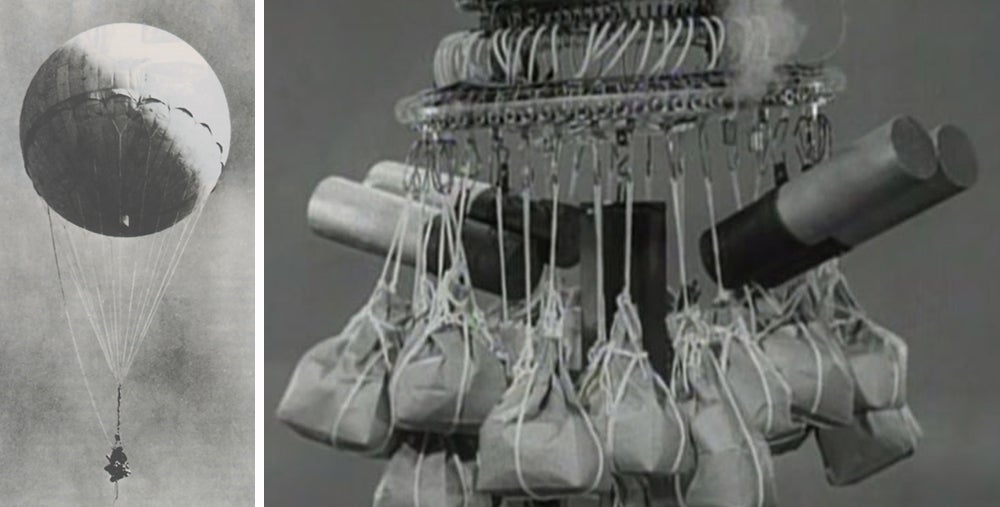
November 3, 1944 – The first Japanese Fu-Go balloon bombs are launched against North America. The Fu-Go (“balloon bomb”) was a hydrogen-filled balloon launched from Japan and intended to travel on the Pacific !!!error: Indecipherable SUB-paragraph formatting!!! to North America. The first ever weapon designed with an intercontinental range, the balloons were armed with either a small antipersonnel bomb or multiple incendiary devices, or both, and were intended to kill civilians or start forest fires in the Pacific Northwest. Over 9,000 were launched, but only one Fu-Go attack resulted in fatalities, when a group of picnickers discovered one on the ground in Oregon. It detonated, killing a pregnant woman and five children. (US Army photo; US Navy photo)
!!! UNKNOWN CONTENT TYPE !!!

November 4, 1968 – The first flight of the Aero L-39 Albatros, a two-seat jet trainer developed by the Czech aircraft manufacturer !!!error: Indecipherable SUB-paragraph formatting!!! as a replacement for the !!!error: Indecipherable SUB-paragraph formatting!!! . The Albatros was the first jet trainer to be equipped with a turbofan engine rather than a turbojet, and its straight wing provides stable flying characteristics at lower speeds. The L-39 has become popular on the air show circuit and with private flight demonstration teams and, while it was designed as a trainer, it has also proven popular as a ground attack aircraft for nations with smaller military budgets. The L-29 was subsequently developed into the L-59 Super Albatros/ !!!error: Indecipherable SUB-paragraph formatting!!! , which features a strengthened fuselage, longer nose, updated cockpit and avionics and a more powerful engine. More than 2,800 L-29s were produced from 1971-1990. (Photo by Adrian Pingstone via !!!error: Indecipherable SUB-paragraph formatting!!! )
!!! UNKNOWN CONTENT TYPE !!!
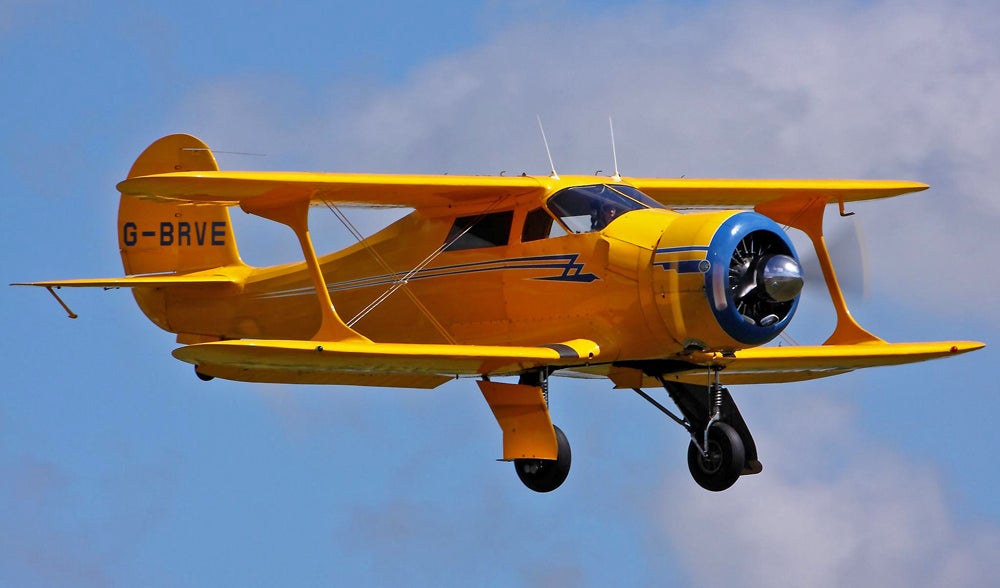
November 4, 1932 – The first flight of the Beechcraft Model 17 Staggerwing. Arguably one of the most beautiful aircraft to come out of the !!!error: Indecipherable SUB-paragraph formatting!!! , the Staggerwing gained its name from the negative wing stagger that placed the lower wing ahead of the upper wing. This arrangement offered improved visibility for the pilot, and also reduces aerodynamic interference between the wing while also providing a home for the retracting landing gear ahead of the center of gravity. The Model 17 was one of the earliest airplanes marketed to flying executives, with an enclosed cabin that carried a pilot and three passengers, as well as retractable landing gear, a rarity at the time. The “Stag” was also popular with air racers, and served the US military as a liaison aircraft, where it was designated the UC-43 Traveler. (Photo by Tim Felce via !!!error: Indecipherable SUB-paragraph formatting!!! )
!!! UNKNOWN CONTENT TYPE !!!
Recent Aviation History Posts
!!! UNKNOWN CONTENT TYPE !!!
!!! UNKNOWN CONTENT TYPE !!!
!!! UNKNOWN CONTENT TYPE !!!
!!! UNKNOWN CONTENT TYPE !!!
!!! UNKNOWN CONTENT TYPE !!!
!!! UNKNOWN CONTENT TYPE !!!
If you enjoy these Aviation History posts, please let me know in the comments. And if you missed any of the past articles, you can find them all at !!!error: Indecipherable SUB-paragraph formatting!!! .
!!! UNKNOWN CONTENT TYPE !!!
 Matt Nichelson
> ttyymmnn
Matt Nichelson
> ttyymmnn
11/04/2016 at 12:38 |
|
I so wanted to make a post on the Spruce Goose on the 2nd, but I just knew you would mention it. Glad to see it got the top shot! I’ve always been fascinated by the Hercules.
 ttyymmnn
> Matt Nichelson
ttyymmnn
> Matt Nichelson
11/04/2016 at 12:40 |
|
Please don’t let my work stop you. I’d love to hear what you have to say about it. Mamy, many years ago, my brother built a model of it. I’ve been fascinated by it ever since. Hughes was kind of a kook, but we need kooks who dream big.
 Amoore100
> ttyymmnn
Amoore100
> ttyymmnn
11/04/2016 at 12:42 |
|
I just realized this: so Hughes basically made a giant, wooden, prop-powered ekranoplan.

 Matt Nichelson
> ttyymmnn
Matt Nichelson
> ttyymmnn
11/04/2016 at 12:44 |
|
I appreciate it. I didn’t want it to get in the way of your normal aviation posts though. I may work on something to post if I get the chance to this weekend.
 HammerheadFistpunch
> ttyymmnn
HammerheadFistpunch
> ttyymmnn
11/04/2016 at 12:55 |
|
Dat beechcraft . mmmm so hot.
 HammerheadFistpunch
> ttyymmnn
HammerheadFistpunch
> ttyymmnn
11/04/2016 at 12:57 |
|
Has anyone ever done modern computer flight modeling of the Hercules? We have to be able to answer the question of whether or not it would have worked by now.
 ttyymmnn
> HammerheadFistpunch
ttyymmnn
> HammerheadFistpunch
11/04/2016 at 12:57 |
|

 ttyymmnn
> HammerheadFistpunch
ttyymmnn
> HammerheadFistpunch
11/04/2016 at 12:59 |
|
I just replied to somebody that it would be fun to put some turboprops on it and see what happens. It looks sound, but there could be problems with the amount of lift generated by the wing.
 ttyymmnn
> Matt Nichelson
ttyymmnn
> Matt Nichelson
11/04/2016 at 12:59 |
|
I wouldn’t mind in the least. Please do. I don’t want to be the only aviation writer around here.
 HammerheadFistpunch
> ttyymmnn
HammerheadFistpunch
> ttyymmnn
11/04/2016 at 13:02 |
|
I just read a thing that said a university fed the parameters into a flight sim and discovered that aside from some nasty flight characteristics with spin, it was very likely it could have done everything hughes said it would. It seems like this is exactly the kinda of thing an aero student should do with their masters or doctoral thesis.
 Aero
> ttyymmnn
Aero
> ttyymmnn
11/04/2016 at 13:06 |
|
One of my favorite planes to see flying at the Reno air races is the Tigercats. The sound of two R-2800s gives me goosebumps.
 Smallbear wants a modern Syclone, local Maple Leafs spammer
> ttyymmnn
Smallbear wants a modern Syclone, local Maple Leafs spammer
> ttyymmnn
11/04/2016 at 13:08 |
|
Mmm Staggerwing. So pretty.
 TheRealBicycleBuck
> ttyymmnn
TheRealBicycleBuck
> ttyymmnn
11/04/2016 at 13:17 |
|
I saw the Goose when it was on display in California. That thing is BIG!
 Mondial goes to 11
> ttyymmnn
Mondial goes to 11
> ttyymmnn
11/04/2016 at 13:19 |
|
I’m still mad that the Spruce Goose is no longer in the dome even though it was really dark in there.
 ttyymmnn
> Amoore100
ttyymmnn
> Amoore100
11/04/2016 at 13:34 |
|
Essentially, yes. Though the Ekranoplan was never designed to fly more than a few feet above the water.
 ttyymmnn
> TheRealBicycleBuck
ttyymmnn
> TheRealBicycleBuck
11/04/2016 at 13:38 |
|
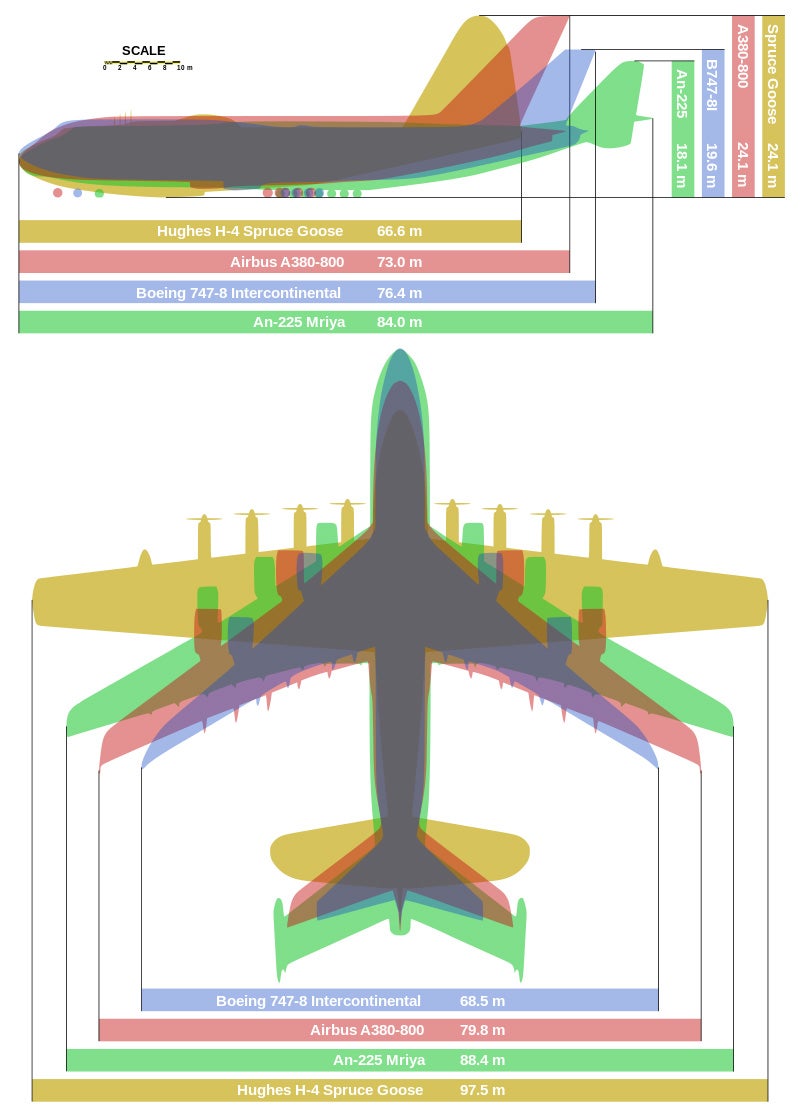
 ttyymmnn
> Aero
ttyymmnn
> Aero
11/04/2016 at 13:39 |
|
I’d love to hear it sometime. Jets are great, but there’s nothing like the scream of those old radials.
 pauljones
> HammerheadFistpunch
pauljones
> HammerheadFistpunch
11/04/2016 at 15:03 |
|
She will, in fact, fly. There have been many simulations done not only by universities, but aerodynamcists at NASA and many other agencies - to say nothing of amateur simulations. They’ve all agreed that the plane will fly, but it would be a handful and would require very experienced pilots to do so safely. The problem it has is that, as you mentioned, it has very tight tolerances in terms of stability. It categorically does not like anything more than a few degrees from straight and level flight.
Hughes was ultimately correct in what he said it was capable of doing. In the hands of the right pilot, it would likely meet its design requirements. However, Hughes was also right in saying that it would never fly again - the fact that it requires such a skilled and careful set of hands at the controls (combined with the sudden lack of need for the capability), means that it would have been unlikely to have reached production, even if the war had continued and it the capabilities were still sought after. It was just to dicey and temperamental of a design to truly be worthwhile.
 HammerheadFistpunch
> pauljones
HammerheadFistpunch
> pauljones
11/04/2016 at 15:09 |
|
I wonder what it would have taken to make it more airworthy, or it its just a consequence of its basic design goals and technology limitations.
 pauljones
> HammerheadFistpunch
pauljones
> HammerheadFistpunch
11/04/2016 at 15:16 |
|
It’s a basic design issue, and it’s unlikely Hughes would have known in advance of actually flying the plane due to the limitations of design tech at the time.
Part of me thinks that Hughes genuinely wanted the airplane to well and truly fly, and had every intention that day of making it do precisely that. Howard Hughes was a talented pilot, and one of the most cocksure (if crazy) bastards of his time. But once he got behind the controls, he got enough of an idea that there would be handling difficulties and shut it down before it could be a potential issue, settling for being content that it he got it off the water as proof that it could theoretically fly. He probably figured that that was a better alternative than the plane making a very, very public crash.
 Dukie - Jalopnik Emergency Management Asshole
> ttyymmnn
Dukie - Jalopnik Emergency Management Asshole
> ttyymmnn
11/05/2016 at 11:51 |
|
I did the cockpit tour of the H-4 in July. That thing is massive on a scale of holy shitsnacks.
Side note: Evergreen Aviation Museum just acquired the old DARPA A-10 (80-186) that still bears the names of some friends of mine. Going to have to make a trek down after it’s put back together and repainted in it’s DS1 scheme.
 ttyymmnn
> Dukie - Jalopnik Emergency Management Asshole
ttyymmnn
> Dukie - Jalopnik Emergency Management Asshole
11/05/2016 at 12:26 |
|
EAM is on my bucket list.